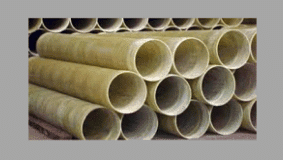BPSC (Bihar) Exam > BPSC (Bihar) Notes > FRP Composite Material And Its Applications
FRP Composite Material And Its Applications - BPSC (Bihar) PDF Download
Fibre-Reinforced Plastic (FRP) - An Introduction

- Fibre-Reinforced Plastic (FRP), also known as a fibre-reinforced polymer, is a composite material that consists of a polymer matrix reinforced with fibres. This combination of materials results in a strong and lightweight material with excellent mechanical properties, making it a popular alternative to traditional materials like steel, wood, aluminium, and concrete.
History and Early Development
- The concept of FRP dates back to the early 20th century when the first fibre-reinforced plastic, Bakelite, was developed.
- Bakelite was one of the earliest thermosetting plastics, and it laid the foundation for the development of modern FRP composites.
Materials Used as Fibre in FRP Composites
- Glass: Fibreglass is one of the most commonly used fibres in FRP composites due to its high strength and relatively low cost.
- Carbon: Carbon fibres offer exceptional strength and stiffness, making them suitable for applications that require high performance.
- Basalt: Basalt fibres are derived from natural volcanic rock and possess good mechanical properties.
- Aramid: Aramid fibres, such as Kevlar, are known for their high strength-to-weight ratio and are often used in aerospace and military applications.
- Other Fibres: In some cases, fibres like paper, wood, or asbestos are also used for specific applications.
Materials Used as Polymers in FRP Composites
- Epoxy: Epoxy resins are widely used as the polymer matrix due to their excellent mechanical properties, adhesion, and chemical resistance.
- Vinylester: Vinylester resins offer good resistance to corrosion and are commonly used in applications where the composite material will be exposed to harsh environments.
- Polyester: Polyester resins are cost-effective and find use in various applications, from marine structures to automotive parts.
- Phenol Formaldehyde: Phenol formaldehyde resins are used in certain specialized applications due to their exceptional heat and chemical resistance.
Manufacturing Processes for FRP Composite Materials
Pultrusion
- Pultrusion is used to create FRP composites with regular and uniform shapes like bars, beams, and rods.
- In this process, fibres are pulled through a heated steel die, saturated with resin, and then drawn through the die to mold them into the required shape.
Filament Winding
- Filament winding is primarily employed to produce parts for tanks and pipes.
- Long fibres that have been wet with resin are twisted around a mold to create the desired shape.
Hand Lamination
- Hand lamination is a cost-effective method to manufacture complex forms like the hull of a boat or an airplane's fuselage.
- Fibres are arranged in a fabric over a mold and then wet with resin.
Vacuum Infusion
- Vacuum infusion is used to create FRP components that are incredibly light and have excellent mechanical properties.
- FRP components with resin and fibres are placed within vacuum bags to increase resin penetration into the fibre cloth.
Advantages of FRP Composites
- High Strength-to-Weight Ratio: FRP composites offer exceptional strength while being lightweight, making them ideal for various applications.
- Corrosion Resistance: FRP materials are highly resistant to corrosion, making them suitable for use in harsh environments.
- Design Flexibility: The manufacturing processes allow for complex shapes and designs to be achieved easily.
- Electrical and Thermal Insulation: FRP composites are excellent electrical insulators and have good thermal properties.
- Long Service Life: FRP structures often have a longer service life compared to traditional materials due to their inherent durability.
Properties of FRP Composites
- Strength Dominated by Fibre Component: In FRP composites, the fibre component primarily contributes to the material's strength. The matrix's role is to encase and distribute forces among the fibres.
- Superior Strength-to-Weight Ratio: The glass fibre, commonly in the form of woven cloth or fibre mats, exhibits greater strength than steel concerning its weight.
- Lightweight: FRP composites are exceptionally light, making them ideal for weight-sensitive applications.
- High Tensile Capacity: These composites demonstrate strong tensile strength, enabling them to withstand pulling forces without breaking.
- Corrosion and Water Resistance: FRP composites possess inherent resistance to corrosion and water, making them suitable for use in harsh environments.
- Electrical Conductivity Resistance: The non-conductive nature of FRP composites ensures they do not conduct electricity, making them suitable for certain electrical applications.
- Chemical Compound Resistance: FRP composites exhibit resistance to various chemicals, enhancing their applicability in chemical and corrosive environments.
- UV Stability: These composites can endure exposure to ultraviolet (UV) radiation without significant degradation, making them suitable for outdoor applications.
Applications of FRP in Aviation and Automobile Industry
- Aerospace Industry: FRP composites find extensive use in the aviation sector due to their exceptional strength-to-weight ratio. They are employed in aircraft components, such as wings, fuselage sections, and tail structures, reducing overall weight and improving fuel efficiency.
- Automobile Industry: In the automotive sector, FRP composites are utilized for their lightweight properties, which contribute to increased fuel efficiency and reduced emissions. They are employed in body panels, bumpers, and interior components.
- Weight Savings: FRP composites offer significant weight savings, making them desirable for both aviation and automotive industries, where reducing weight is crucial for improved performance.
- Precision Engineering: The inherent strength and stiffness of FRP composites allow for precise engineering, enabling the creation of intricate and complex designs.
- Finite Tolerances: FRP composites can be manufactured with tight tolerances, ensuring consistency in production and enhancing overall quality.
- Simplified Part Design: With the versatility of FRP composites, complex assemblies can often be simplified into single molded parts, reducing assembly time and costs.
- Cost-Effectiveness: Manufacturing molded polymer artifacts using FRP composites is generally cheaper, faster, and easier than casting aluminum or steel artifacts, while still maintaining comparable or even better tolerances and material strengths.
The document FRP Composite Material And Its Applications - BPSC (Bihar) is a part of BPSC (Bihar) category.
All you need of BPSC (Bihar) at this link: BPSC (Bihar)
Related Searches














